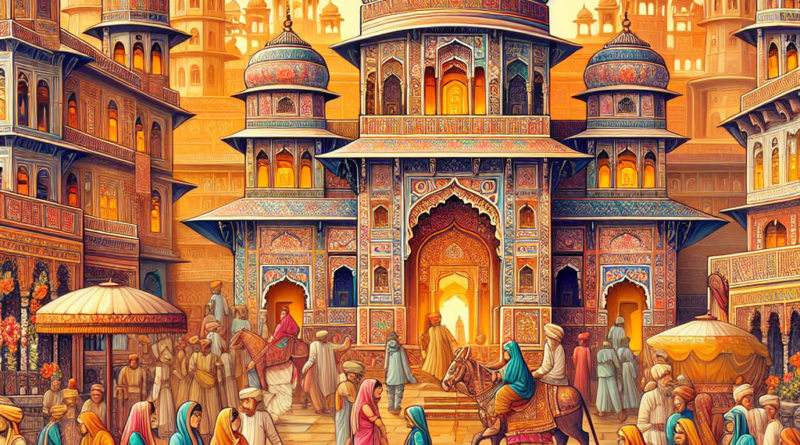Land of Diversity: The Ancient Indian Civilization
Title: The Rich Tapestry of Indian Civilization: Exploring Hindu and Indian Cultural Significance
Introduction:
India, with its ancient civilization dating back thousands of years, is a land of diverse cultures, languages, and traditions. At the heart of Indian civilization lies Hinduism, the predominant religion that has shaped the cultural landscape of the country. The rich tapestry of Indian civilization is a testament to the resilience, creativity, and spiritual depth of its people. In this article, we will delve into the historical context and contemporary relevance of Hindu and Indian cultural significance.
Historical Context:
The roots of Indian civilization can be traced back to the great Indus Valley Civilization, one of the world’s oldest urban civilizations. The ancient texts of the Vedas, the foundational scriptures of Hinduism, provide insights into the spiritual and philosophical traditions that have flourished in India for millennia. Hinduism, with its pantheon of gods and goddesses, rituals, myths, and scriptures, has played a central role in shaping Indian culture and society.
The concept of dharma, or duty, is a fundamental principle in Hinduism that emphasizes moral and ethical living. This concept has influenced every aspect of Indian life, from family relationships to social hierarchies to political governance. The caste system, although a controversial and often misunderstood aspect of Hindu society, has its roots in ancient texts and has shaped social structures in India for centuries.
Indian civilization has also been a melting pot of diverse cultural influences. Over the centuries, India has been invaded and ruled by various dynasties, including the Mauryas, Guptas, Mughals, and British. Each of these rulers has left their mark on Indian culture, from architecture to cuisine to language. The synthesis of indigenous traditions with foreign influences has created a unique cultural mosaic that is distinctly Indian.
Contemporary Relevance:
In contemporary India, the cultural significance of Hinduism is evident in every aspect of life. Festivals like Diwali, Holi, and Navratri are celebrated with great fervor across the country, bringing people together in joy and camaraderie. The practice of yoga and meditation, rooted in ancient Hindu philosophies, has gained popularity worldwide for its physical and mental health benefits.
Indian art and architecture, from the temples of Khajuraho to the Taj Mahal, continue to inspire awe and admiration for their beauty and grandeur. Traditional Indian music, dance, and theater forms like Bharatanatyam, Kathak, and Carnatic music are cherished and preserved as expressions of cultural heritage.
The philosophy of ahimsa, or non-violence, espoused by Mahatma Gandhi during India’s struggle for independence, has had a lasting impact on the world. Gandhi’s principles of nonviolent resistance and civil disobedience continue to inspire movements for social justice and equality globally.
Indian cuisine, with its myriad flavors and spices, has captivated taste buds around the world. From fragrant curries to crispy dosas to creamy desserts, Indian food reflects the diversity and richness of the country’s culinary traditions.
Conclusion:
Indian civilization, with its deep-rooted connection to Hinduism and diverse cultural heritage, continues to be a source of inspiration and fascination for people around the world. The historical context of Indian civilization provides insights into the enduring values and beliefs that have shaped Indian society. The contemporary relevance of Hindu and Indian cultural significance is evident in the vibrant arts, traditions, and philosophies that continue to thrive in modern India.
As India navigates the challenges of the 21st century, its ancient civilization serves as a beacon of wisdom and resilience, reminding us of the enduring power of culture and tradition in shaping our collective identity. Hinduism and Indian culture, with their timeless wisdom and universal appeal, stand as a testament to the richness and diversity of human experience.

